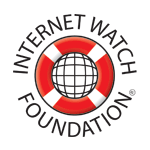Child Pornography cases obtaining confessions with an effective interview strategy

Most subjects in child victimization image cases are preferential sex offenders— many of these individuals have molested children; however, their backgrounds often do not identify a molestation conviction. While most of the subjects possess and distribute child pornography, only a few produce it. Further, child pornographers are increasingly using the Internet to facilitate their criminal activities. The following interview strategy has proven successful when dealing with preferential sex offenders in child pornography cases.
Investigative Interview Preparation
In addition to basic investigative practices, investigators can prepare for a successful interview strategy by obtaining information from the FBI’s Innocent Images National Initiative program, search warrants, and informants or witnesses. Investigators should obtain personal information regarding the subject’s marital status, criminal and employment history, and, especially, community service because many subjects actively seek occupations and volunteer opportunities where contact with children is certain to occur. Further, investigators can conduct ruse telephone calls, as well as trash and mail covers, to determine whether the subject listed on a particular Internet account under investigation actually resides at a specific residence. These types of thorough preparation increase the probability of gaining a confession. Once confronted by investigators, the subject will know that his illegal activities have been discovered and thoroughly investigated.
Initial Approach
After investigators show appropriate identification and detail the purpose of the interview to the subject, they should state their accusation. A direct accusation statement must be convincing in its delivery. Typically, the suspect then will deny involvement and protest his innocence. If the subject states his denial (e.g., “I didn’t do it”), investigators immediately should interrupt him. For example, they can turn their heads, possibly raising their hands with palms facing the subject in a dismissive motion. Investigators should remember that denial by the guilty usually weakens over time, whereas an innocent person likely will become more enraged at each accusation of criminal activity. The subject also may protest his innocence through such statements as “I could not have done this; I am a religious man” or “I would not have done that; what would my family think?” Investigators should not interrupt these types of protests because they usually are based, in part, on the truth. Following the subject’s protests, investigators should incorporate these partial truths into the interrogation process by using statements, such as “I’m glad to hear you say that; I know you’re a good man” or “You are a religious man who is devoted to his family.” After clearly accusing the suspect, interviewers should detail evidence against the individual. Further, investigators should follow the accusation, denials, and protests with a series of theme-development strategies.
Theme Development
- Rationalization: “I understand your situation; you love kids so much that you were just reaching out to help any way you could. Things just got out of hand.”
- Projection of blame: “The problem is that parents do not spend enough time with their children. Once neglected, kids will do anything for attention.”
- Minimization: “We’re not talking about hurting children here. We’re only talking about a few photographs. You’ve never harmed anyone.”
Investigators should avoid judgmental terms during the presentation of RPMs to preclude an eventual molestation confession. After presenting RPMs, investigators should look for signs of receptivity by the subject, such as crying, bowing the head, averting the eyes, taking deep breaths, and slouching, suggesting that the individual wants to admit his involvement in the crime. Once investigators observe signs of receptivity, they should offer a reason to confess, which deals with the subject’s present situation and offers him hope. For example, “I know things have gotten out of hand despite your best efforts, but now is your opportunity to stand up, be a man, and do the right thing for these kids and your family.”
Once investigators have given the subject a reason to confess, they can present a bad-good option, initially presenting a choice unacceptable (or bad) to the subject followed by an acceptable (or good) one. The bad-good option leads the subject toward either a partial or full confession. For instance, investigators can make statements, such as “Either you’re a monster who preys on little children or you just possess a few photographs of kids. Which is it?” If the suspect rejects the bad-good option, investigators then should start anew with RPMs, looking again for signs of receptivity before presenting a reason to confess and another bad-good option. Investigators can use the following example to structure a child pornography interrogation:
Mr. Doe, my name is Agent Smith, FBI, and this is a warrant from a federal judge ordering me to conduct a search of your property for child pornography. I know that you possess child pornography. This is not an arrest warrant. I am not putting handcuffs on you, and you are not in custody. We are not interviewing your wife at work, and, as you can see, we are not knocking on your neighbors’ doors. Nor have your family and friends been contacted at this time. Right now, this matter is between you and me. I have no interest in contacting anyone else until we talk. Child pornography has been detected on your computer, and, shortly, I will show you a sample of the captured images. I will do this so that you can assure me that these are children simply from the Internet and not kids you are hurting in the neighborhood. My primary concern today is to determine if any children in the neighborhood are being harmed. My priority today is to identify any child who may need help.
These statements establish that investigators 1) are not the adversary; 2) have no doubt that the subject possesses child pornography; 3) already have conducted surveillance of the subject’s computer; 4) potentially have sparked the subject’s interest in viewing some of the evidence; and 5) have minimized the child pornography as being less serious than harming children. Although the subject may molest neighborhood children, the goal at this time is to achieve admissions through the usage of interrogative techniques as a foundation for the full confession. Investigators should continue to present RPMs and observe the subject to give him a reason to confess and a bad-good option.
We both know that things have gone on too long and cannot continue. It’s time to put an end to this and move on. I have worked these cases for years and have dealt with two types of people: those who hate and hurt children and are utterly evil, and others who honestly care about children and are affectionate toward them, but get caught up in a mess they need help getting out of. I don’t think you’re evil. But, I have to leave here today convinced that while I know you are looking at pictures of kids on the Internet and masturbating, you are not a monster living in the middle of an unsuspecting neighborhood. Are you hurting the neighborhood children or just downloading Internet child porn for your own sexual needs in the privacy of your own home?
Investigators have given the subject the option of confessing to the crime or confessing to being a monster, not the option of denying the crime. The admission of masturbation or other sexual activity connected to the child pornography is important—subjects may be detained based on their admissions that they actively used the child pornography in a sexual way, thereby creating a threat to their communities.
Often, at this stage, the subject will admit to the crime and latch onto the minimization offered by the investigator. Numerous cases have occurred where the subject blurts, “I don’t have sex with children; I just download pictures and masturbate.” Often, investigators must respond with compassion and understanding, suggesting that all men look at porn and that it was not the subject’s choice to have a preference for children. Once they obtain the initial confession, investigators then can continue to build on the same interview strategy to acquire details regarding the extent of the subject’s criminal activity.
Case Examples of Investigators Successfully Using Various Themes to Obtain Child Pornography Confessions
Subject #1 possessed, distributed, and produced pornography in conjunction with four other subjects who were members of a volunteer search and rescue group. He embraced the theme that the children he was assaulting were not babies or virgins and that in the end, he was trying to help them financially. Investigators allowed the subject to blame the children’s parents for lack of affection and attention, which the children subsequently sought from him. At the interview, all five subjects provided confessions; four pled guilty and one was convicted at trial. Subject #1 thanked investigators for being decent and professional during their initial approach. The empathy shown to him successfully elicited his confession and cooperation.
Subject #2 was an unmarried male elementary school teacher who quickly admitted to the possession of child pornography. Under the progressive method of obtaining the complete confession, the teacher admitted to a sexual desire for the boys in his class. He then admitted that every time he touched, hugged, comforted, or consoled a child in his class, he felt sexually stimulated. He progressively confessed that the only reason he became a teacher was to have access to young boys.
Subject #3 was a divorced, 45-year-old male employed as a manager of a halfway house. He quickly confessed to possessing and then distributing child pornography. Then, investigators presented the scenario of the possibility of computer examiners finding alarming material and gave the subject the opportunity to explain that material up front. Subject #3 admitted that bathtub pictures of his daughters might be found. Further, he admitted that he was having sex with his daughters and videotaping the acts. He led investigators to the tapes and disks. Subject #4, a 20-year-old female, initially confessed to possessing child pornography. Progressively, she admitted to involvement in the production of child pornography. Ultimately, she confessed to seducing a 35-yearold woman to gain access to the woman’s 12- year-old daughter and using that girl and other minor females for sex and the production of child pornography.
Subject #5 possessed 30,000 images of child sexual victimization and was involved in distribution. He was a 45-year-old white male, a geological engineer, and married with two teenage boys. He admitted that he spent hours each evening downloading child pornography and masturbating. He confessed while rationalizing that he was not harming children, just feeding his sexual desire for children via the Internet. Subject #5 was a prior Boy Scout troop leader. He admitted at the end of the interview that the lack of condemnation and the validation of his long-held rationalizations aided in his willingness to confess. He pled guilty.
Confessions
Investigators should build from initial to complete confession. From possession to distribution to production, investigators should guide the subject to progressively admit the more serious violations. Scenarios, such as “Is there anything my computer examiners will find alarming on your computer that we can clear up now? Pictures of kids in your class? Pictures of kids in the bathtub?” may lead to an admission. If so, investigators should press forward, inquiring about the possibility of finding pictures of the offender with the children in situations not designed to harm the children. Investigators should have the subject initial the images, verifying those that came from the Internet versus children in his neighborhood. The subject then reinforces his confession in his attempt to deny activity with children. Then, investigators should address the topic of actual contact with children and identify victims with the intent of distinguishing the subject’s “young friends.” The subject likely will identify children he has not molested, but those children can be interviewed later to identify their friends who may be victims.
With these admissions, investigators should remember the increased significance of child pornography as peripheral material in other violent crimes. This method has resulted in the progressive admissions of individuals, starting with the possession of pornography and ending with the confession that the only reason the subject became an elementary school teacher was to have access to young boys. Additionally, this approach has gained initial admissions of possession, progressing to the subject eventually leading investigators to the videos and disks documenting a subject’s sexual assault of his own daughter. Investigators should avoid displaying judgment and anger. Rather, they should show sympathy, understanding, patience, and acceptance, allowing the subject to offer any excuses and explanations along with admissions.
Elements of Interrogation
Convincingly Accuse the Suspect
• Tell the suspect you are aware he is involved in the crime.
• Show case facts and refer to real or implied evidence to convince the suspect of the futility of denial.
Investigators often can obtain confessions in child pornography investigations using constructive interrogative techniques. By carefully conducting investigative interview preparation; using an effective initial approach; developing a theme (rationalizing, projecting blame, and minimizing); pursuing a progressive confession; and identifying victims, agencies increase the likelihood that they will elicit admissions from guilty subjects. Confessions eliminate lengthy trial preparations, help the case rapidly move to sentencing,6 and allow the investigators to move on to another assignment, focusing critical resources in other directions. Further, confessions keep communities and residents safe by ensuring that subjects no longer can victimize innocent children.
1 For a more in-depth discussion of the characteristics and traits of subjects in child pornography investigations, refer to Kenneth V. Lanning, National Center for the Analysis of Violent Crime, Sexual Victimization of Children (FBI Academy, 2000).
2 Philip Jenkins, Beyond Tolerance: Child Pornography on the Internet (New York, NY: New York University Press, 2001); Carlos A. Arnaldo, Child Abuse and the Internet: Ending the Silence (New York, NY: United Nations Educational, Scientific and Cultural Foundation and Berghahn Books, 2001); and Heather Jacobson and Rebecca Green, “Computer Crimes,” American Criminal Law Review 39 (Spring 2002): 225.
4 For illustrative purposes and to maintain clarity, the authors employ masculine pronouns for subjects.
5 D. Finkelhor and R. Ormrod, Child Abuse Reported to the Police, May 2001, retrieved on July 13, 2004, from http:// ojjdp.ncjrs.org/publications.
6 R.A. Leo, “Inside the Interrogation Room,” Journal of Criminal Law and Criminology 86, no. 2 (1996): 266-304.

















































